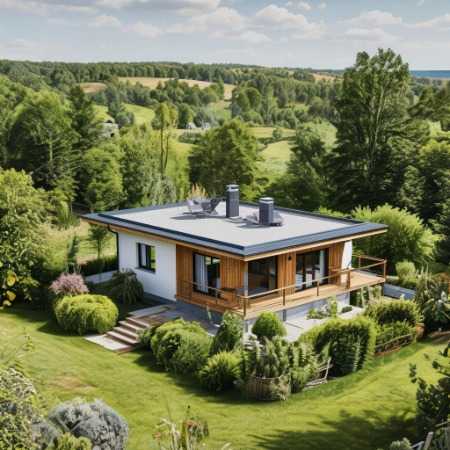Flat roofs are a common type of covering for residential and industrial buildings. Despite the name, they are built with a slight slope to allow water drainage. Their structural simplicity, rational use of space, and modern appearance make them popular in construction. However, flat roofs require special attention, since even small defects may lead to leaks and serious damage.
Major repairs are necessary when superficial restoration is no longer sufficient. Over time, waterproofing loses elasticity, insulation becomes saturated, and structural elements deteriorate. In such cases, only a full-scale renovation ensures reliability and long-term performance.
This is particularly important for roofs that serve as terraces or equipment platforms, where durability requirements are much higher.
Causes of Flat Roof Damage
Moisture is the main factor leading to flat roof failure. Water penetrates joints and accumulates in areas with poor slopes. In winter, freezing water expands, causing cracks and further destruction.
Another factor is UV radiation. Constant exposure to sunlight reduces the elasticity of bitumen-based materials, leading to cracks.
Flat roofs are also exposed to mechanical loads from snow accumulation and equipment placed on them. Excessive pressure deforms the structure and damages waterproofing.
Stages of Major Flat Roof Repair
The first stage is a detailed inspection to identify leaks, waterproofing condition, insulation quality, and the integrity of the concrete base.
Next, all old layers are removed, including waterproofing, insulation, and damaged screed. This reveals hidden issues that cannot be seen otherwise.
A new roofing system is then installed, consisting of vapor barrier, insulation, screed, and waterproofing. Finally, drainage elements, parapets, and protective finishes are mounted.
Types of Repair Depending on Roof Condition
Major repair scope depends on roof condition. In some cases, only the top waterproofing layer is replaced, while in others, full reconstruction of all layers is required.
If the roof is under 10–15 years old, partial replacement may be sufficient. Roofs over 20 years old usually need full renovation.
| Roof condition | Recommended repair | Service life after repair |
|---|---|---|
| Local defects | Replace top layer | 7–10 years |
| Damaged insulation | Partial reconstruction | 15–20 years |
| Severe wear | Full renovation | 25–30 years |
Modern Materials for Major Repair
Bitumen roll materials remain the traditional choice due to affordability and ease of installation, but their lifespan is limited.
Polymer membranes (PVC, TPO, EPDM) are more durable, UV-resistant, and last up to 40–50 years. They are laid in large sheets, reducing seams.
Spray-applied coatings like liquid rubber create seamless waterproof layers, though they are more expensive.
Insulation and Screed Restoration
If insulation is wet, it must be replaced, as it loses thermal efficiency. Modern options include extruded polystyrene foam and high-density mineral wool.
The base screed is rebuilt with proper slopes for drainage. Reinforcement and additives prevent cracks and ensure durability.
Comparing Repair Methods
Roll materials are the cheapest and easiest but require frequent maintenance. Membranes offer superior performance but cost more. Spray coatings balance both, though less common.
| Method | Durability | Cost | Features |
|---|---|---|---|
| Roll materials | 10–15 years | Low | Easy and accessible |
| Polymer membranes | 30–50 years | Medium/High | Fewer seams, durable |
| Spray coatings | 20–30 years | High | Seamless protection |
Repair of Usable vs. Non-Usable Roofs
If the roof is used as a terrace or equipment area, stronger insulation and reinforced waterproofing are required. Non-usable roofs can rely on lighter solutions but still must meet standards.
Usable roofs often include concrete slabs, paving, or special decking to protect against mechanical damage.
Economic Efficiency of Major Repair
Although expensive, major repairs are more cost-effective than repeated minor repairs. They extend roof life for decades and reduce energy costs by improving insulation.
| Repair type | Cost per m² | Service life | Efficiency |
|---|---|---|---|
| Local repair | Low | 3–7 years | Low |
| Regular repair | Medium | 7–12 years | Medium |
| Major repair | High | 20–30 years | High |
Conclusion
Major flat roof repair is a complex process that ensures building protection and long-term performance. It requires inspection, dismantling old layers, restoring insulation and screed, and installing modern waterproofing.
The choice of materials and technologies determines durability, which can reach 30–50 years with proper methods.

